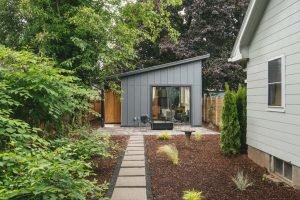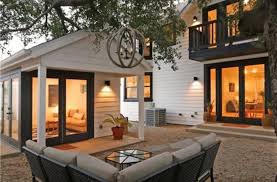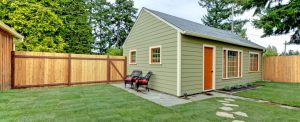 by Phil Thibault
by Phil Thibault
The nomenclature that is used in zoning bylaws and building codes needs to be well thought and meaningful.
I was recently involved in a hearing at a State Commission where a discussion contemplated whether the wording “in” meant inclusive to or interior of and not exterior. This explanation itself is confusing. I understand and can only say that in these instances, “words have meanings.”
I can see this occurring in the discussion of Accessory Dwelling Units and In-law Suites. The lines seem blurred these days on what constitutes either of these arrangements. l can tell you the difference between a fire partition, fire barriers, and fire walls. While the general public and contractors often use these terms interchangeably, they are vastly different with vastly different applications and requirements.
The key to understanding the nomenclature is understanding the purpose for the terms and what is the intended goal to be accomplished. Zoning within a municipality is to provide clear and understandable guidelines to what are acceptable uses within defined districts. Zoning is always trying to reach an equilibrium too, as confusing as that may sound.
 Residential zones will try to exclude business and industrial occupancies. Pre-existing and nonconforming uses that are abandoned for more than two years revert to the existing underlying zoning. Additionally, the equilibrium also applies to lot sizes and characteristics. State statutes will have adjacent lots held in common ownership merge to create new lots to be compliant with existing zoning requirements.
Residential zones will try to exclude business and industrial occupancies. Pre-existing and nonconforming uses that are abandoned for more than two years revert to the existing underlying zoning. Additionally, the equilibrium also applies to lot sizes and characteristics. State statutes will have adjacent lots held in common ownership merge to create new lots to be compliant with existing zoning requirements.
What is the objective to permitting In-law suites in a single-family residential zone? The admirable objective it to care for an extended family member. I realize that this is simplistic and a naive interpretation. At the core, this use does not change the underlying zoning or a single-family occupancy of the lot. The resident living within the In-law suite is accepted as a member of the family, be they relatives, friends, or caregivers. Nannies and au pairs certainly fit within this category in my eyes. The occupants are acting and living as a single-family unit.
 Accessory dwelling unit is somewhat of a newcomer to this zoning lexicon. We know the distinction between primary and accessory. In the case of dwelling units, accessory does not pertain to the familial relationship of the occupants but the structures and the occupancies. Zoning may put restrictions on the size and location of these accessory dwelling units. The ability to access the unit from the exterior separately is often a key feature. There may also be restrictions for the unit to be accessible with unrestricted access from the interior of the primary dwelling. While serving on the Dracut Planning Board over a decade ago, a resident applied for an In-law suite for his home. The applicant requested the access to the unit be separate and exterior to the main residence. When queried why, the response surprised me. “I don’t want them bothering me.” I asked if he understood the relationship between his wife and her parents and the reason for the application and hearing with the Board.
Accessory dwelling unit is somewhat of a newcomer to this zoning lexicon. We know the distinction between primary and accessory. In the case of dwelling units, accessory does not pertain to the familial relationship of the occupants but the structures and the occupancies. Zoning may put restrictions on the size and location of these accessory dwelling units. The ability to access the unit from the exterior separately is often a key feature. There may also be restrictions for the unit to be accessible with unrestricted access from the interior of the primary dwelling. While serving on the Dracut Planning Board over a decade ago, a resident applied for an In-law suite for his home. The applicant requested the access to the unit be separate and exterior to the main residence. When queried why, the response surprised me. “I don’t want them bothering me.” I asked if he understood the relationship between his wife and her parents and the reason for the application and hearing with the Board.
 I hear many arguments these ADU’s will most often be occupied by distant family members like a niece, nephew, and grandchild or even by a family friend or their child, etc. The permanent nature of the occupants is germane to this discussion. If the ADU becomes the primary domicile for the occupant, the property is serving as a two-family use. This may be in opposition to the intent of the zoning. An In-law suite is seen as a transient occupancy by zoning. The ADU is a permanent arrangement. That acknowledges that the ADU occupancy can last only a few weeks or months and the In-law suite occupancy can last years. The size of the similar dwelling units has even slipped into the building codes with the 2018 International Residential Building Code for one- and two-family dwellings with the adoption of Appendix Q: Tiny Homes. These are dwellings of four hundred square feet or less for full living purposes.
I hear many arguments these ADU’s will most often be occupied by distant family members like a niece, nephew, and grandchild or even by a family friend or their child, etc. The permanent nature of the occupants is germane to this discussion. If the ADU becomes the primary domicile for the occupant, the property is serving as a two-family use. This may be in opposition to the intent of the zoning. An In-law suite is seen as a transient occupancy by zoning. The ADU is a permanent arrangement. That acknowledges that the ADU occupancy can last only a few weeks or months and the In-law suite occupancy can last years. The size of the similar dwelling units has even slipped into the building codes with the 2018 International Residential Building Code for one- and two-family dwellings with the adoption of Appendix Q: Tiny Homes. These are dwellings of four hundred square feet or less for full living purposes.
When properly codified, both ADU’s and In-law suites are wonderful tools to provide dignified and affordable housing to a community. The caution is that the terms and applications are not interchangeable. To think and pretend that they are, will be ruinous to a community and its neighborhoods as they exist. Changes should not be made without forethought and contemplation for unintended consequences. All scenarios that come to mind should be discussed, as well as their likelihood of realization. The middle of the bell curve should be where we focus our attention and not to the extremities. Both ADU’s and In-law suites have a place in our society, and society needs to find the proper home for them to occupy.














